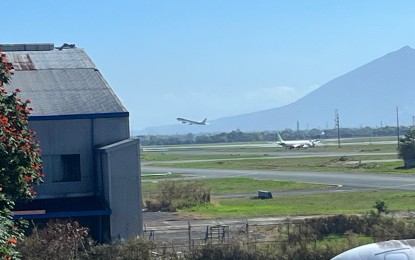
MANILA – The mission of the National Aeronautics and Space Administration (NASA) to test air quality through international collaborative efforts will help the Philippines gain access to advanced air quality monitoring techniques to study and fight pollution.
In her opening remarks at the NASA Media Day event in Clark, Pampanga on Thursday, Department of Environment and Natural Resources (DENR) Secretary Maria Antonia Yulo-Loyzaga cited the importance of the collaboration to address air pollution, while combatting climate change towards a global campaign for better air quality.
Through the Airborne and Satellite Investigation of Asian Air Quality (ASIA-AQ), an international collaborative research, Loyzaga said the country would have access to NASA's satellite data analysis, enhanced ground-based observations, and atmospheric modeling tools.
“This can lead to improved monitoring capabilities, and allow for more accurate and comprehensive assessment of air pollution levels across the country. Timely and reliable air quality information can help Filipinos make informed decisions regarding their own health and their activities outdoors as well, and it can assist the government, especially local executives in the national government agencies, in implementing targeted evidence-informed interventions to address air pollution hotspots,” she said.
Aside from the Philippines, the ASIA-AQ brings together other international experts in Asia, such as South Korea’s National Institute of Environmental Research (NIER), Universiti Kebangsaan Malaysia (UKM), and Thailand’s Geo-Informatics and Space Technology Development Agency (GISTDA).
The Philippine team is composed of young engineers and air quality specialists from the DENR’s Environmental Management Bureau, while the Philippine Space Agency, Manila Observatory, Ateneo de Manila University, and the University of the Philippines will also collaborate to understand and tackle air pollution challenges in the region.
Loyzaga said ASIA-AQ promotes collaboration among participating countries, including the sharing of research findings, data, and best practices related to air quality management that can lead to a better understanding of transboundary air pollution and the sharing of effective strategies for reducing pollution.
“By participating in this collaboration, the Philippines can learn from the experience of other countries in the region as well as the United States and contribute our expertise, but also learning from their own experience to enhance our own decision-making. This will lead to more efficient and comprehensive air quality management approaches,” she said.
Moreover, Loyzaga said the collaboration will also enable the country to strengthen policies related to air quality management as it provides important research findings and analysis, enabling evidence-informed policy-making and targeted interventions.
NASA’s ASIA-AQ science mission will deploy a DC-8 aircraft, targeting four flights between Feb. 5 and 14, that will fly over the Manila urban area at a safe, low altitude, without harm, to investigate the atmosphere of Metro Manila and surrounding regions.
The DC-8 carries a payload of 26 instruments for in-situ sampling of atmospheric composition, with measurements covering a wide range of gaseous compounds, fine particles and their composition and physical properties, and meteorological variables.
NASA advised the public that residents in the areas below the flight path will see and hear the aircraft as it flies to measure air quality.
The public and other interested individuals may track its flights through an aircraft tracking website located at https://airbornescience.nasa.gov/tracker/. (PNA)
